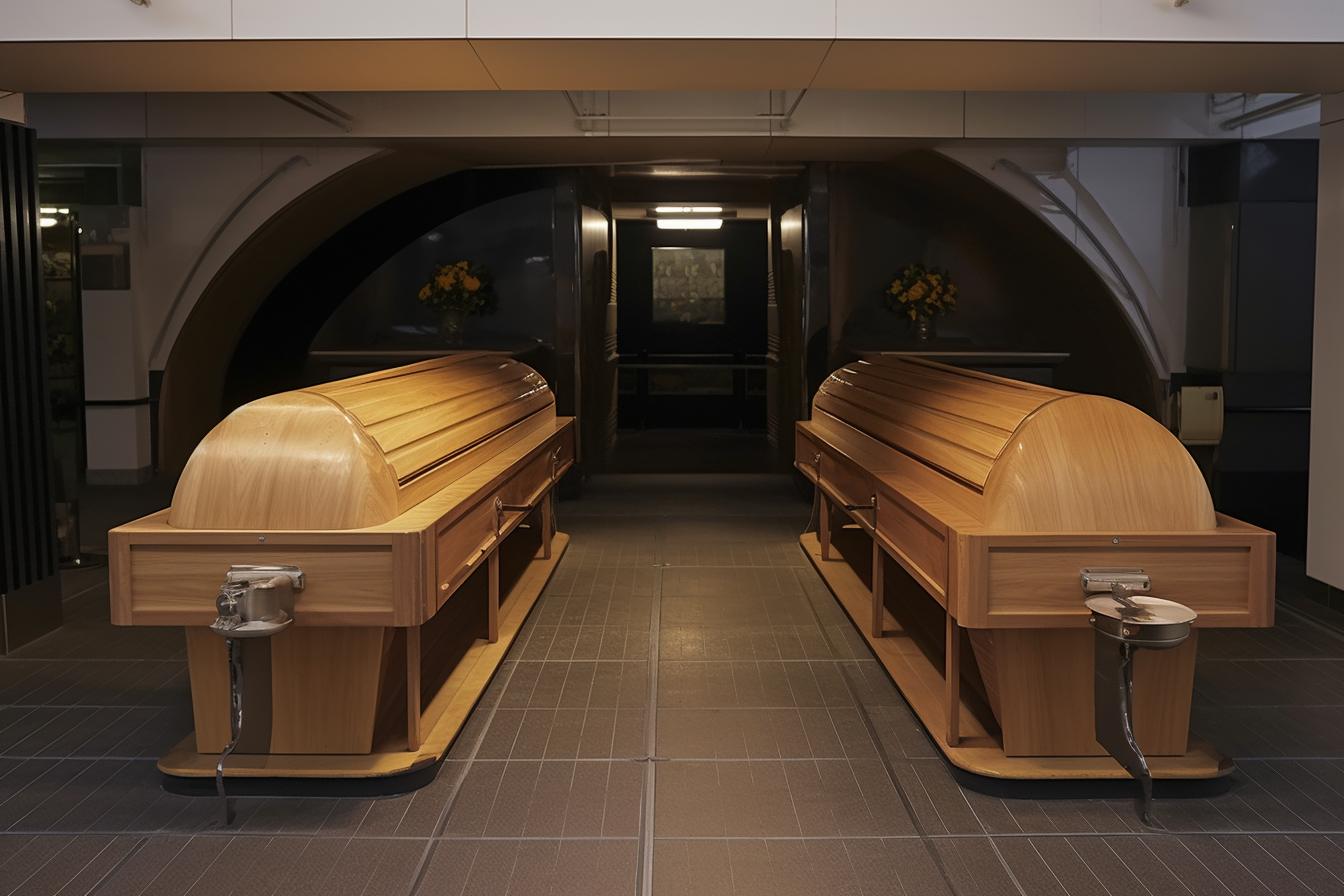How Cremation Happens and What to Expect
Wondering how cremation actually works? Whether you're planning ahead or navigating a loss, understanding the cremation process can help ease uncertainty. This guide walks through each step, highlights what’s included, and explains what families should expect.

What are the steps in the cremation process?
The cremation process follows a specific sequence of events:
-
Authorization and documentation: Family members must provide written consent and necessary paperwork.
-
Body preparation: The deceased is identified, and any medical devices or prosthetics are removed.
-
Container selection: The body is placed in a combustible container or casket.
-
Cremation chamber: The container with the body is moved into the cremation chamber, also called a retort.
-
Cremation: The body is exposed to high temperatures (1400-1800°F) for 2-3 hours.
-
Cooling and processing: Remaining bone fragments are cooled and processed into a fine, sand-like consistency.
-
Transfer to urn: The cremated remains, or “ashes,” are placed in an urn or temporary container.
-
Return to family: The urn is returned to the family or prepared for final disposition.
How does cremation compare to burial in terms of cost?
Cremation typically costs less than traditional burial, making it an attractive option for many families. The cost difference stems from several factors:
-
No need for a burial plot or grave opening fees
-
Simpler container options (cremation casket vs. traditional casket)
-
Fewer or no embalming expenses
-
Reduced transportation costs
-
More flexible memorial service options
While exact prices vary by location and provider, cremation can often cost 40-50% less than a traditional funeral with burial. However, additional services like viewings or elaborate urns can increase the overall expense.
What is direct cremation, and how can I find it locally?
Direct cremation is the simplest and most affordable cremation option. It involves:
-
Transfer of the deceased to the crematory
-
Minimal paperwork and planning
-
Cremation without a viewing or ceremony
-
Return of the cremated remains to the family
To find direct cremation services in your area:
-
Search online for “cremation services” in your city or state
-
Contact local funeral homes and ask about their direct cremation offerings
-
Check with cremation societies or non-profit funeral cooperatives
-
Read reviews and compare prices from multiple providers
Remember to ask about included services, additional fees, and the timeline for receiving the cremated remains.
What are prepaid cremation plans, and should I consider one?
Prepaid cremation plans allow individuals to arrange and pay for their cremation in advance. These plans can:
-
Lock in current prices, protecting against inflation
-
Reduce the financial and emotional burden on family members
-
Ensure your final wishes are clearly communicated and followed
When considering a prepaid plan:
-
Research the provider’s reputation and financial stability
-
Understand what services are included and what might incur additional costs
-
Ask about refund policies and what happens if you move or change your mind
-
Compare offers from multiple providers to ensure you’re getting a fair deal
While prepaid plans can offer peace of mind, they’re not without risks. Be sure to read the fine print and consider alternatives like dedicated savings accounts.
What unique considerations exist for cremation in the United States?
In the United States, cremation practices and regulations can vary by state:
-
Some states require a waiting period (usually 24-48 hours) before cremation can occur
-
Certain states mandate that a funeral director be involved in the process
-
Environmental regulations may limit the scattering of ashes in some areas
-
Veterans may be eligible for free cremation and interment through the VA
-
Many states allow for “green” or flameless cremation options, such as alkaline hydrolysis
Additionally, cultural and religious attitudes towards cremation have shifted significantly in recent decades, with many faiths becoming more accepting of the practice.
How do I choose a cremation provider?
When selecting a cremation provider, consider the following factors:
| Provider Type | Services Offered | Key Features/Benefits |
|---|---|---|
| Funeral Homes | Full-service cremation, memorial planning | One-stop shop for all needs, personalized service |
| Crematories | Direct cremation, basic services | Often more affordable, specialized in cremation |
| Online Providers | Arrangement facilitation, price comparison | Convenience, potentially lower costs |
| Non-Profit Societies | Member-based cremation services | Advocacy, education, potentially lower costs |
When evaluating providers:
-
Check for proper licensing and certifications
-
Read reviews and ask for recommendations
-
Inquire about their cremation process and facilities
-
Get a clear, itemized price list of services
-
Ensure they can accommodate any special requests or cultural needs
Remember that the least expensive option isn’t always the best choice. Consider the provider’s reputation, the level of service offered, and your family’s specific needs when making a decision.
In conclusion, understanding the cremation process and available options can help you make informed decisions during a difficult time. Whether opting for direct cremation, exploring prepaid plans, or seeking a full-service provider, take the time to research and compare your choices. By doing so, you can ensure that your final arrangements or those of your loved ones align with personal wishes, cultural values, and financial considerations.




